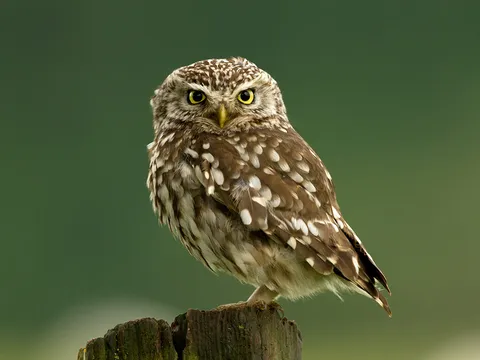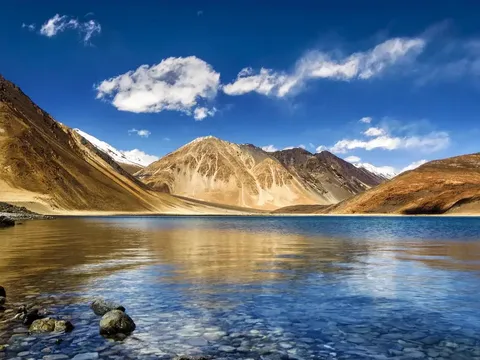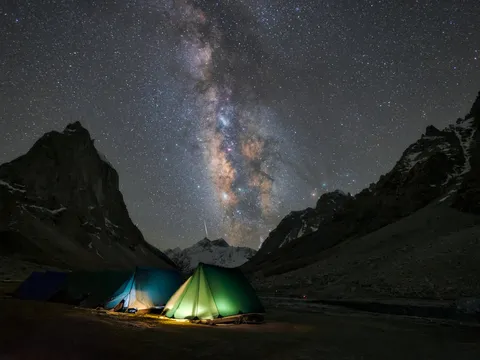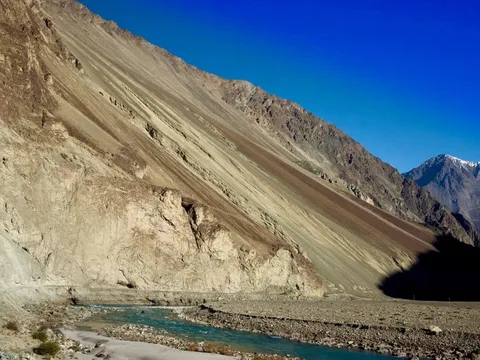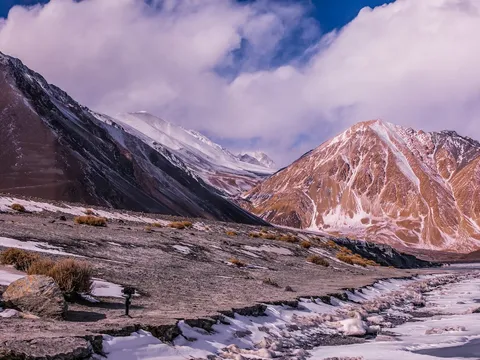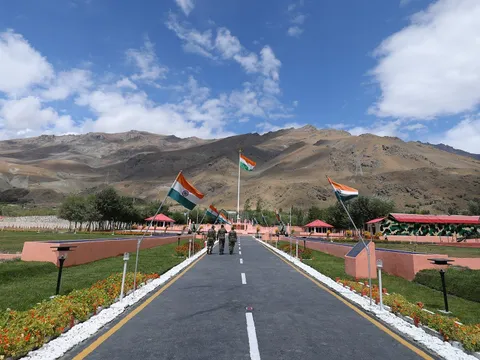Birding and Wildlife Tour in Ladakh
9N/10D
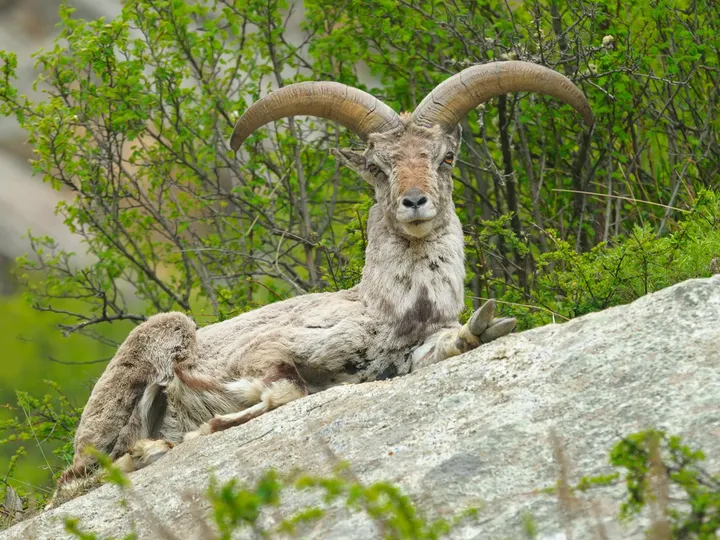
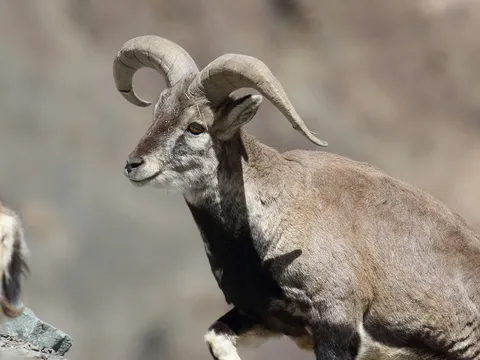
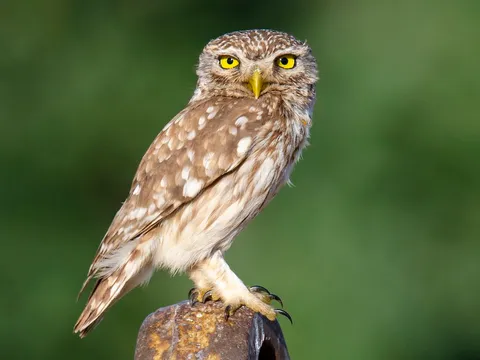

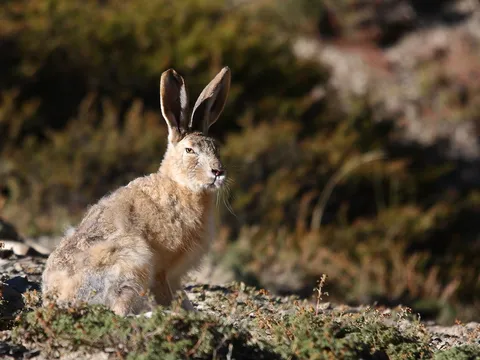
View Gallery
Overview
Embark on an unforgettable 10-day birding and wildlife journey through the breathtaking landscapes of Ladakh, a high-altitude desert that’s home to over 300 species of birds and rare Himalayan wildlife. Beginning in Leh, this itinerary includes birdwatching along the Indus River belt, where you’ll spot species like the Ibisbill, Bluethroat, and Rosy Pipit amidst marshes, wetlands, and buckthorn patches.
Explore the Shey Marshes, Choglamsar, and Rumbak Valley, each offering unique sightings from Red-billed Choughs to Himalayan Snowcocks and Brown Accentors, along with glimpses of marmots, pikas, and the elusive snow leopard. The adventure continues with a drive to Nubra Valley via the iconic Khardung La Pass, offering not only stunning views but also the chance to observe raptors, ducks, and the rare White-browed Tit Warbler.
Wildlife enthusiasts may also encounter Bactrian camels, blue sheep, and the elusive Tibetan fox. The journey then takes you to the pristine Tso Moriri and Tso Kar lakes - prime breeding grounds for the Bar-Headed Goose, Black-Necked Crane, and Great Crested Grebe - where the high-altitude wetlands come alive with rare waterfowl, waders, and migratory species.
Traversing through Puga Valley, Polo Kongka La, and the expansive Rupshu Plains, this tour is a paradise for ornithologists and nature lovers alike. Whether it’s the Tibetan Snowcock at Tanglang La, the Little Owl at Tsokar, or the serene sight of a Ruddy Shelduck gliding across a glacial lake, each stop reveals Ladakh’s extraordinary biodiversity. This curated experience is perfect for those seeking an immersive wildlife expedition in one of India’s most remote and awe-inspiring regions.
Itinerary
Arrive at Leh Airport and transfer to the Hotel. Rest in the hotel for acclimatization to Ladakh's high altitude. With enough free time in the afternoon, one can explore nearby areas and expect to see species like Black-billed Magpie, Black Kite, Common Kestrel, Mountain Chiffchaff, Red-Billed Chough, etc. Stay overnight at the hotel.
Be ready for birding the full day. Reach the Indus River Belt from Shey, 18km east of Leh, by passing through the irrigation channels and marshes, or follow the river upstream from the bridge at Choglamsar.
Expect to see Bluethroats (Luscinia svecica), Streaked Rosefinch (Carpodacus rubicilloides), Water Pipits (Anthus spinoletta), White-Winged Redstart, Rosy Pipits (Anthus roseatus), the Ibisbill (Ibidorhyncha struthersii), the Hobby (Hypotrichosis) in summer, or the Water Rail. Also, get to explore the grazing land, the shoreline, wetlands, and thick buckthorn patches along the riverbanks of the Indus. Spend the night at the hotel.
By crossing Khardung La Pass, the world's highest motorable pass (18,380 ft/5,700m), drive to Nubra Valley where visitors can expect to see raptors, ducks, waders, and White-browed Tit Warbler, etc. here.
Mammals, including Tibetan fox, lynx, pika, Himalayan blue sheep, and Bactrian camel (semi-feral), can be among the exciting discoveries for birdwatchers. Further, cape hares (race tibetanus) can only be spotted in India. Return to the hotel for dinner and overnight stay.
Drive back to Leh using the same route, crossing Khardong La Pass. Overnight stay at Leh in the Hotel.
Full day birding around the Rumbak Valley. Birds like brown and robin accentor, streaked rose-finch, tickell's leaf warbler, chukar, Tibetan snow-finch, red-billed chough, Himalayan snow-cock, common and fork-tailed swift, fire-fronted serin, twite, etc can be seen.
Mammals, including Urial, Himalayan marmot, Tibetan wolf, and argali, above Yurutse, are also present here. Later, drive back to Leh for an overnight stay.
Situated at an altitude of 4,650m, Tsomoriri is the largest lake in Rupshu Plains, can be reached in a day by driving from Leh, enjoying beautiful panoramic scenery. The lake is the best-known and most important breeding ground for the Bar-Headed Goose Anser indicus in Ladakh. Black-Necked Grebe Podiceps nigricollis and the Great Crested Grebe P. cristatus can both be found there.
Once an Arctic Skua Stercorarius parasiticus was seen chasing a Brown-Headed Gull Larus brunnicephalus over the lake! Accentors, rose finches, and mountain finches can be seen in the peashrub-covered northern slopes. Mammals include blue sheep, fox, weasel, marmot, woolly hare, and pikas. Overnight in a Home stay
Reach Tsokar via Puga Valley and Polo Kongka La after breakfast. Black-Necked Cranes, waterfowl, Common Redshanks, and lots of waders can be seen at the lake. The most common mammal species spotted here are Tibetan wild ass, Stolizka's mountain vole, and marmot.
Other than this, Little Owl, Plain-backed Snowfinch. Tibetan Sandgrouse, Horned Lark, Tibetan Snow finch, and Hume's Short-Toed Lark are the exotic birds found in Tsokar Lake. Avocet, Ruddy Shelduck, the breeding colony of Crested Grebe, and Black-Necked Cranes may be seen around the freshwater lakes in the afternoon. Overnight in a Homestay
The lake's surroundings, comprising marshes, wetlands, and grasslands, provide an ideal habitat for various bird species and wildlife. The diverse ecosystem around Tsokar contributes to the presence of different avian life. So let’s take one more day to watch these beautiful lives. Overnight in a Homestay.
Driving back to Leh via the Tanglang Pass, stop on the route for more bird watching. Intriguing species Tibetan Snowcock and the White-capped Redstart, can be spotted on the way. Reach leh by late afternoon, stay overnight.
After an early breakfast, reach Ladakh airport for an early flight and get back to Delhi with lifelong memories of an adventurous trip you just had.
What's included
- Airport pickup and drop-off
- Accommodation
- Breakfast and dinner
- All transfer/sightseeing as per the itinerary (point to point)
- 01 Oxygen cylinder in each vehicle
- Daily hot/boiled/filtered water bottle
- Inner line permit/environmental permit, Ladakh entry fees, wildlife fees, and Red Cross Society fee
- Nature Guide services throughout the tour in Ladakh
- Spotting throughout the tour.
- National Park entrance fees
- Spotting Scope during the trek.
What's excluded
- Airfare
- Any kind of personal expenses or optional tours/extra meals ordered
- Monument/Museum Entrances, rafting, and camel ride
- Services of a local tour guide
- Tips, insurance, laundry, phone Calls
- Any kind of drinks (Alcoholic, Mineral, Aerated)
Good to know
Dos:
- Rest for at least 24 hours upon arrival to acclimatize to the high altitude.
- Stay hydrated by drinking plenty of water or fluids (avoid alcohol).
- Cooperate with locals, porters, guides, and drivers.
- Respect the local culture and environment.
- Avoid using polythene; Ladakh is a polythene-free zone.
- Dispose of all waste properly.
- Carry an identification card (passport, voter ID, driving license, etc.) along with a photocopy.
Don’ts:
- Do not wear denim; it is not suitable for trekking.
- Do not overpack with snacks, colas, alcohol, or personal food.
- Do not bring any trekking equipment such as tents; it will be provided.
- Do not expect guaranteed smooth transit as weather and road conditions may affect travel.
Clothing:
- Heavy warm feather jacket
- Warm fleece jacket
- Woolen and windproof gloves
- Warm hat
- Woolen socks
- Warm windproof trousers
- Sweaters
Gear and Accessories:
- Waterproof trekking shoes
- UV-protected sunglasses
- Torch with extra batteries
- Sunscreen lotion and cold cream
- Sleeping bag suitable for -25°C
- Light, quick-drying towel
- Lip balm or chapstick
- Water bottles (insulated or regular)
- Camera, memory cards, and spare batteries
- Personal toiletries, tissue rolls, windcheater
- Walking sticks (if available)
Documents:
- Identification card (passport, voter ID, driving license, etc.)
- Photocopy of the identification card
Medicines
- Avomine for vomiting
- D Cold or Combiflam for cold or body aches
- Vicks balm
- Diamox (250mg) for high altitude issues (consult your doctor)
- Saridon for headaches
- Glucon D or Electral powder
- Camphor
- Any personal prescribed medicines
- Consult your doctor for additional recommendations
Preventing Acute Mountain Sickness (AMS)
- AMS can affect anyone at altitudes above 10,000 feet
- Leh is situated at 11,500 feet above sea level
- Common symptoms include headache, disturbed sleep, nausea, breathlessness, fatigue, and lack of appetite
- Rest for the first 24 hours after arrival
- Stay hydrated and avoid alcohol or smoking
- Keep warm and avoid physical exertion on the first day
- Take Diamox if recommended by a medical professional
7% OFF
Starting from
₹1,06,675 ₹99,208
Per person (price can vary by group size)

